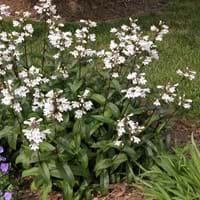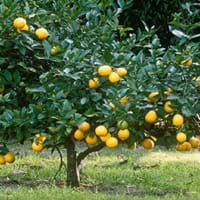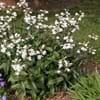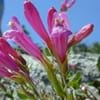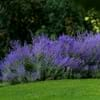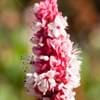Life Span
Perennial
Perennial
Type
Flowering Plants
Fruit
Origin
Northeastern United States, Mid-Atlantic United States, North-Central United States, Central United States
Asia
Types
Not Available
Avalon Lemon, Bears Lemon, Buddha's Hand, Bush Lemon, Citron
Number of Varieties
Not Available
Habitat
Fields, open Woodlands, Wood Margins
Mixed deciduous forest, Tropical regions
USDA Hardiness Zone
3-8
9-12
Sunset Zone
1a, 1b, 2a, 2b, 3a, 3b, 4, 5, 6, 7, 8, 9, 14, 15, 16, 17, 18, 19, 20, 21, 22, 23, 24
H1, H2, 8, 9, 12, 13, 14, 15, 16, 17, 18, 19, 20, 21, 22, 23, 24
Habit
Clump-Forming
Oval or Rounded
Flower Color
White, Light Pink
White
Flower Color Modifier
Bicolor
Bicolor
Fruit Color
Brown
Yellow, Lemon yellow
Leaf Color in Spring
Dark Red
Green
Leaf Color in Summer
Dark Red
Green
Leaf Color in Fall
Dark Red
Green
Leaf Color in Winter
Not Available
Light Green
Leaf Shape
Lance-shaped to oblong
Oval
Plant Season
Spring, Summer
Spring, Summer, Fall, Winter
Sunlight
Full Sun, Partial Sun
Full Sun, Partial Sun
Type of Soil
Loam, Sand
Loam, Sand
The pH of Soil
Acidic, Neutral, Alkaline
Acidic, Neutral
Soil Drainage
Well drained
Well drained
Bloom Time
Late Spring, Early Summer
Indeterminate
Tolerances
Drought, Salt
Drought
Where to Plant?
Container, Ground, Pot
Container, Ground
How to Plant?
Root Division, Seedlings, Softwood cuttings
Seedlings
Plant Maintenance
Medium
Medium
Watering Requirements
Average Water Needs
Keep the ground moist but not water-logged, occasional watering once established
In Summer
Lots of watering
Lots of watering
In Spring
Moderate
Moderate
In Winter
Average Water
Average Water
Soil pH
Acidic, Neutral, Alkaline
Acidic, Neutral
Soil Type
Loam, Sand
Loam, Sand
Soil Drainage Capacity
Well drained
Well drained
Sun Exposure
Full Sun, Partial Sun
Full Sun, Partial Sun
Pruning
Remove damaged leaves, Remove dead branches, Remove dead leaves
Generally pruned to waist height, pruning needed for strong structure, Remove damaged leaves, Remove dead branches, Remove dead leaves
Fertilizers
Complete balanced fertilizer
All-Purpose Liquid Fertilizer, Doesn't require fertilization when grown in rich soil
Pests and Diseases
Leaf spot, Root rot
Aphids, Grasshoppers, Leafminers, Red blotch, Rust, Snails
Plant Tolerance
Drought
Drought, Drought and Salt
Flower Petal Number
Single
Single
Fragrant Bark/Stem
No
Yes
Foliage Texture
Medium
Medium
Foliage Sheen
Matte
Glossy
Attracts
Birds, Hummingbirds, Butterflies
Birds, Butterflies
Allergy
Mild Allergen
Diarrhea, Hyperacidity, Sore Throat, Whooping Cough
Aesthetic Uses
Borders, Wild gardens
Cottage Garden
Beauty Benefits
Not Available
Glowing Skin, Maintains teeth healthy, Making cosmetics, Nourishes scalp, Perfumes, Skin inflammation
Environmental Uses
Air purification
Air purification, Fixes Nitrogen, Insect Repellent, soil stabilisation
Medicinal Uses
Tooth ache
Acne, Antibacterial, Antirheumatic, Appetizer, Bone strength, Digestion problems, Hangover, Healthy teeth, Nutrients, Obesity, Oral health, Skin irritation
Part of Plant Used
Root
Bark, Fruits, Leaf Stalks, Leaves
Other Uses
Showy Purposes
Air freshner, Biomass for fuel, Can be made into a herbal tea, Leaves are used as mosquito repellent, Making Perfumes, Preferably used as black tea, Used as a nutritious food item
Used As Indoor Plant
Yes
No
Used As Outdoor Plant
Yes
Yes
Garden Design
Cutflower, Mixed Border, Wildflower
Container, Edible, Fruit / Fruit Tree, Hedges, Houseplant, Mixed Border, Topiary / Bonsai / Espalier, Tropical
Botanical Name
PENSTEMON digitalis 'Husker Red'
CITRUS limon
Common Name
Husker Red Penstemon, Talus Slope Penstemon
Lemon
In Hindi
Talus Slope Penstemon
नींबू
In German
Gehängeschutt Penstemon
Citrone or Limone or Zitrone
In French
Talus Slope Penstemon
Citron or Citronnier
In Spanish
Astrágalo pendiente Penstemon
Limón or Limonero
In Greek
Αστράγαλος Κλίση Penstemon
Λεμόνι [Lemóni]
In Portuguese
Talus Penstemon Slope
Limão
In Polish
Talus Slope Penstemon
Cytrynowy
In Latin
Talus Clivo Persicaria
Limon
Phylum
Magnoliophyta
Magnoliophyta
Class
Magnoliopsida
Magnoliopsida
Order
Scrophulariales
Sapindales
Family
Scrophulariaceae
Rutaceae
Clade
Angiosperms, Asterids, Eudicots
Rosids
Tribe
Not Available
Not Available
Subfamily
Not Available
Not Available
Number of Species
Not Available
Season and Care of Talus Slope Penstemon and Lemon
Season and care of Talus Slope Penstemon and Lemon is important to know. While considering everything about Talus Slope Penstemon and Lemon Care, growing season is an essential factor. Talus Slope Penstemon season is Spring and Summer and Lemon season is Spring and Summer. The type of soil for Talus Slope Penstemon is Loam, Sand and for Lemon is Loam, Sand while the PH of soil for Talus Slope Penstemon is Acidic, Neutral, Alkaline and for Lemon is Acidic, Neutral.
Talus Slope Penstemon and Lemon Physical Information
Talus Slope Penstemon and Lemon physical information is very important for comparison. Talus Slope Penstemon height is 60.00 cm and width 30.00 cm whereas Lemon height is 120.00 cm and width 150.00 cm. The color specification of Talus Slope Penstemon and Lemon are as follows:
Talus Slope Penstemon flower color: White and Light Pink
Talus Slope Penstemon leaf color: Dark Red
Lemon flower color: White
- Lemon leaf color: Green
Care of Talus Slope Penstemon and Lemon
Care of Talus Slope Penstemon and Lemon include pruning, fertilizers, watering etc. Talus Slope Penstemon pruning is done Remove damaged leaves, Remove dead branches and Remove dead leaves and Lemon pruning is done Generally pruned to waist height, pruning needed for strong structure, Remove damaged leaves, Remove dead branches and Remove dead leaves. In summer Talus Slope Penstemon needs Lots of watering and in winter, it needs Average Water. Whereas, in summer Lemon needs Lots of watering and in winter, it needs Average Water.
